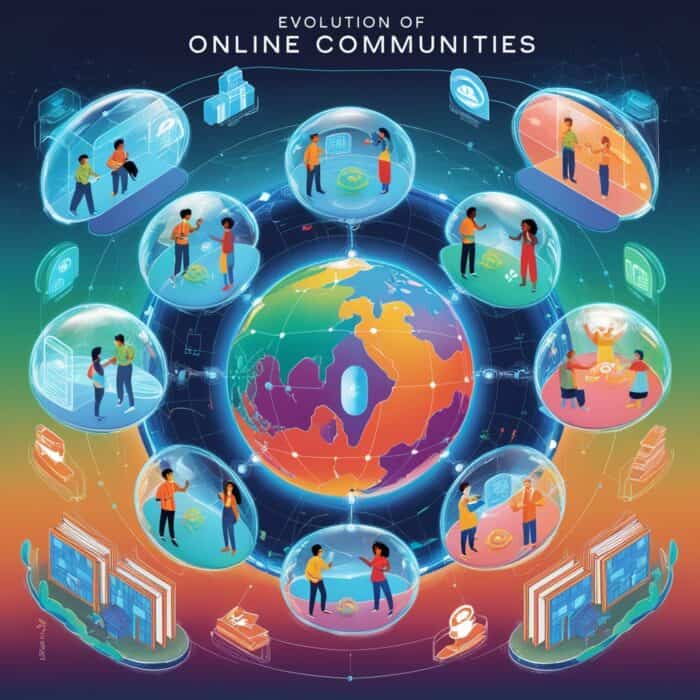
Online communities
Ok, let’s discuss online communities; why are they important, a typology about them, thier life cycle, and how to build and manage them.
Introduction to Online Communities
The concept of community has undergone a significant transformation in the digital age. Traditionally, communities were closely associated with specific geographic locations and the people living there, often promoting an idyllic sense of belonging and connection nurtured over generations. However, the internet has facilitated the rapid growth of online populations, spanning a wide range of formats from social media networks to interest groups, support forums, and brand communities.
Online communities can manifest as public open spaces, such as a company’s social media account on platforms like Twitter or Facebook, or as closed private groups on messaging platforms like WhatsApp or Telegram. The boundaries between community and society often blur in online settings, challenging traditional sociological distinctions. German sociologist Tönnies’ concepts of community (gemeinschaft) and society (gesellschaft) take on new meanings in the digital realm, where emotional connections and rational aims can coexist and intertwine.
The evolution of online communities can be traced back to Usenet, formed in 1980 as a forum for online discussions. This was followed by early social networks like the WELL (Whole Earth ‘Lectronic Link) in 1985. Since then, various social networks have emerged, enabling users to create and join online groups with increasing ease and sophistication. Each platform offers unique features for community building, from LinkedIn’s professional groups to Facebook’s versatile group functionality.
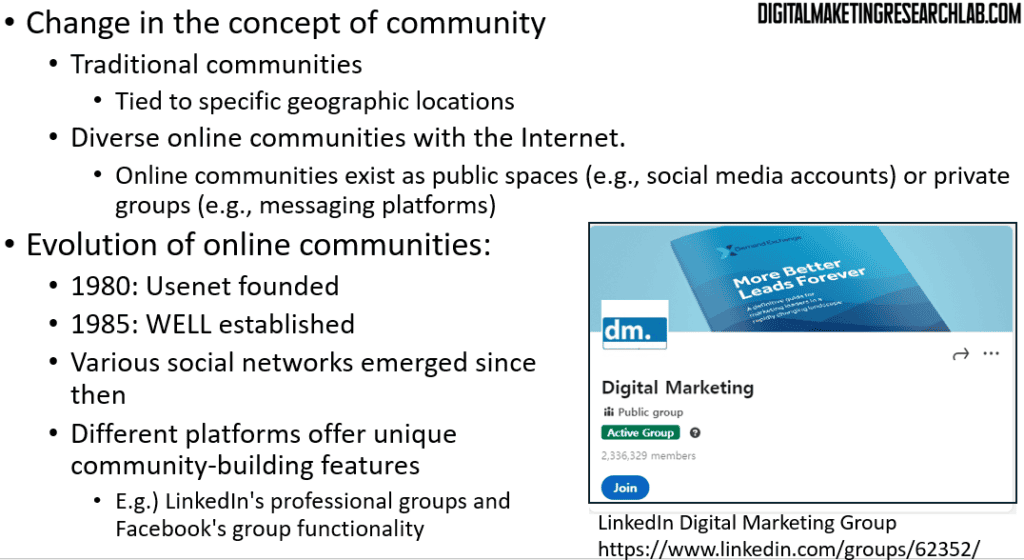
Why Communities Matter
Communities are powerful spaces that can significantly influence society, both online and offline. In a marketing context, brands have benefited immensely from direct contact with consumers through online communities, gaining valuable insights into product usage, brand perceptions, and consumer behavior. This direct line of communication has revolutionized how companies understand and interact with their customer base.
The concept of “brand community” was introduced by Muñiz and O’Guinn in 2001, offering a framework to understand groups of consumers who share a strong affinity for a particular brand. These researchers identified three key elements that define these specialized communities.
First, members experience a profound sense of belonging, feeling deeply connected not only to the brand itself but also to fellow community members. This creates a network of individuals united by their shared passion.
Second, brand communities are characterized by the presence of shared rituals and traditions. These common practices serve to reinforce the community’s collective values and strengthen the bonds between members.
Finally, there exists a sense of moral responsibility within the community. Members feel a duty or obligation to support and assist one another, fostering a culture of mutual aid and solidarity. This sense of responsibility extends beyond mere product ownership, encompassing a broader commitment to the community’s well-being. Together, these elements create a unique social structure centered around brand affiliation, demonstrating the potential for brands to foster meaningful connections among consumers.
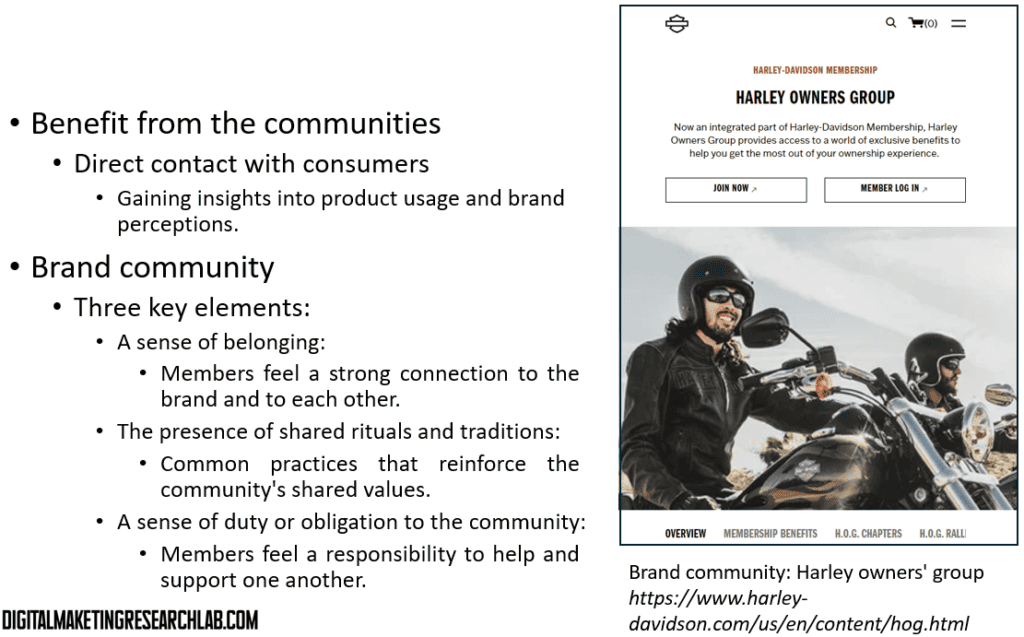
Online communities extend beyond geographical limitations, creating a sense of belonging around shared interests, causes, or brand affiliations. For example, a hashtag like #MentalHealthAwareness can unite people across the globe in a virtual community focused on a common concern. These communities can foster empathy, support, and collective action in ways that were not possible before the digital age.
The strength of weak ties, as described by Granovetter (1973), plays a crucial role in how online communities function. Weak ties, such as acquaintances or colleagues, can provide valuable information, opportunities, and diverse perspectives that might not be available within one’s close circle. This concept is particularly relevant in professional networking platforms like LinkedIn, where connections can lead to job opportunities, business partnerships, or knowledge sharing.
Granovetter argued that interpersonal ties are based on four interconnected elements:
- Time in the group: Stronger ties require more time and effort, influencing how we craft and share content on social media.
- Emotional intensity: This can be episodic, like sharing personal struggles during the pandemic. Some platforms have introduced features to support emotional expression, such as LinkedIn’s #OpenToWork badges or Facebook’s care reactions.
- Intimacy: This relates to close relationships and can include in-group language or behaviors. On social media, it can manifest as “public intimacy” – displaying interpersonal ties for others to see.
- Reciprocity: This involves mutual help within a network. In social media, it can take the form of exchanging likes, follows, or sharing content.
These elements contribute to building “social capital” – the value derived from one’s social network. Some platforms, like LinkedIn, were specifically created to help users increase their social capital through professional connections.
The strength of ties (strong or weak) affects how these elements play out in social interactions, both online and offline. While strong ties may provide more substantial support, weak ties can be valuable for information dissemination.
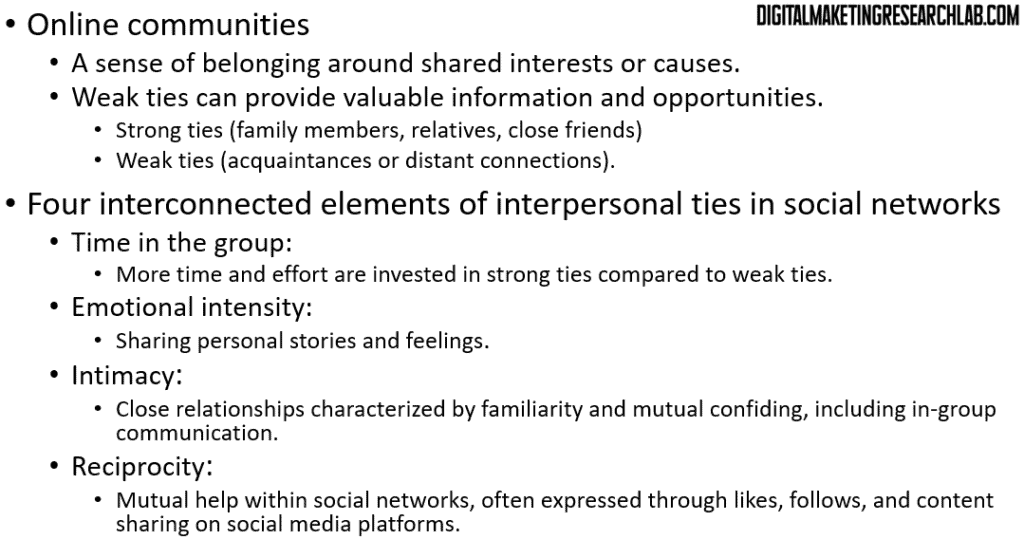
A Typology of Online Communities
Online communities can be categorized based on their purpose, structure, and member interactions. Understanding these different types can help organizations and individuals choose the most appropriate format for their goals:
1. Communities of Practice: These groups consist of active practitioners or experts in specific fields. Examples include ResearchGate for academics or Stack Overflow for programmers. They focus on knowledge sharing, problem-solving, and professional development.
2. Communities of Interest: These groups bring together individuals who are curious about a particular topic but may not be experts. Platforms like Pinterest or Reddit host numerous interest-based communities, from cooking enthusiasts to amateur astronomers.
3. Communities of Transaction: These platforms facilitate buying and selling between members. eBay is a prime example, creating a global marketplace for individuals to trade goods and services.

4. Communities of Relationship: These support groups are centered around life events or shared experiences. Examples include Mumsnet for parents or health-related groups for individuals dealing with specific medical conditions.
5. Communities of Fantasy: These groups focus on gaming, role-playing, or other forms of escapism. They often involve the use of avatars or alter egos and can be found on platforms dedicated to specific games or broader gaming communities.
6. Consumption Communities: These groups discuss products or services, sharing reviews, tips, and experiences. They can be brand-specific or cover broader product categories.
7. Brand Communities: These groups consist of admirers or customers of specific brands. They can be officially managed by the brand or created independently by fans, fostering brand loyalty and providing valuable feedback.

The Life Cycles of Communities
Online communities typically go through several stages in their lifecycle as you can see below. Each stage presents unique challenges and opportunities:
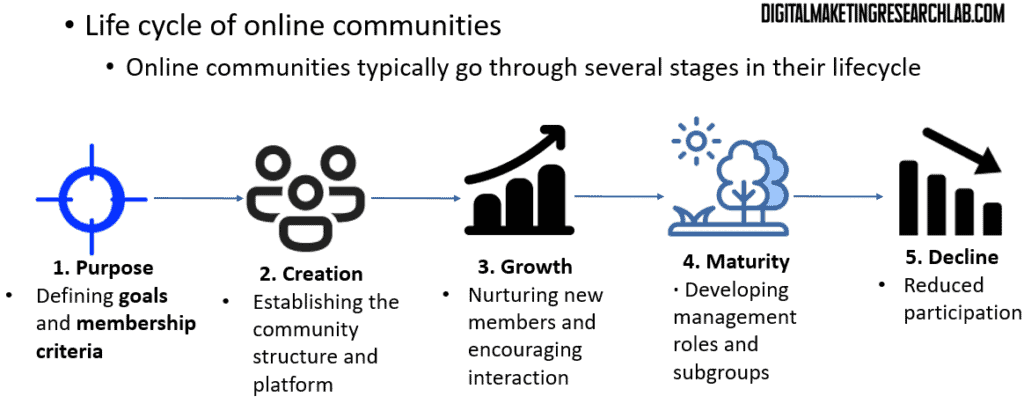
1. Purpose: This initial stage involves defining clear goals, objectives, and membership criteria. A well-defined purpose helps attract the right members and sets the tone for community interactions.
2. Creation: This stage involves establishing the community structure, choosing the appropriate platform, and setting up initial content and guidelines. It’s crucial to create an welcoming environment that encourages participation.
3. Growth: During this phase, the focus is on nurturing new members, encouraging interaction, and building a sense of community. This may involve creating engaging content, facilitating discussions, and recognizing active contributors.
4. Maturity: As the community grows, it becomes necessary to develop more formal management roles, create subgroups for specific interests, and implement more sophisticated engagement strategies. This stage often sees the emergence of community leaders and influencers.
5. Decline: Many communities eventually face reduced participation or evolving member needs. This stage requires careful analysis to determine whether to revitalize the community, shift its focus, or gracefully conclude its activities.

Why Organizations Start Online Communities
Organizations create online communities for various strategic reasons:
1. Product Discussions: Communities provide a platform for customers to discuss products or services, offering valuable insights for product development and improvement. They also allow companies to address concerns and highlight product benefits.
2. Social Selling: Leveraging communities as sales channels can be highly effective, as recommendations from fellow community members often carry more weight than traditional advertising. This approach, known as social selling, can significantly impact purchase decisions.
3. Customer Support: Online communities can serve as efficient customer support platforms, allowing customers to help each other and reducing the burden on official support channels. This peer-to-peer support can often resolve issues more quickly and cost-effectively.
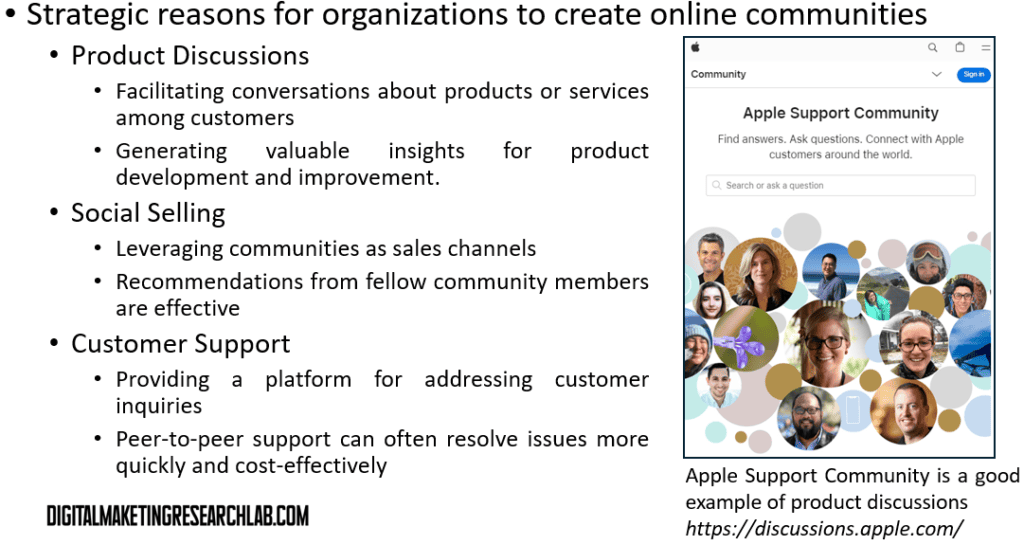
4. Brand Awareness: Communities increase visibility and engagement with the brand, fostering brand loyalty and turning customers into brand advocates. They provide a space for customers to share their experiences and for the brand to showcase its values and personality.
5. Market Research: Communities offer a wealth of data on customer preferences, behaviors, and pain points. This real-time feedback can inform product development, marketing strategies, and overall business decisions.
6. Innovation: Many organizations use communities for co-creation, involving customers in the ideation and development process for new products or services.
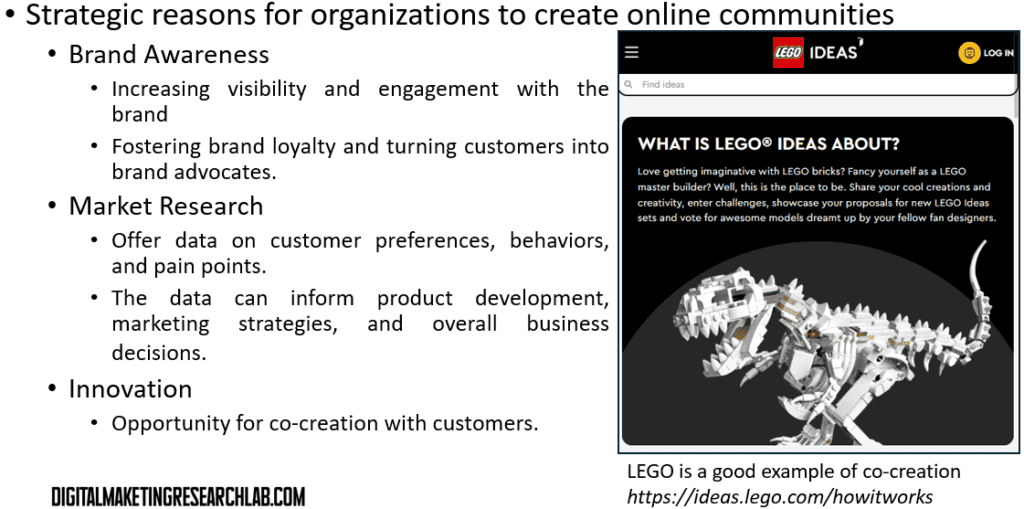
Establishing and Managing Online Communities
When it comes to building and managing an online community, there’s a lot to consider. First and foremost, you need to have a clear purpose in mind. What are you trying to achieve with this community? Having well-defined objectives will not only guide your development process but also help you measure your success down the line.
Next, you’ll want to think carefully about where your community will live. Which platform will work best for your target audience? It’s important to choose a space that aligns with both your community’s needs and your members’ preferences.
Of course, you can’t forget about branding. What will you call your community? What will it focus on? A catchy name and a clear focus can go a long way in attracting and retaining members..
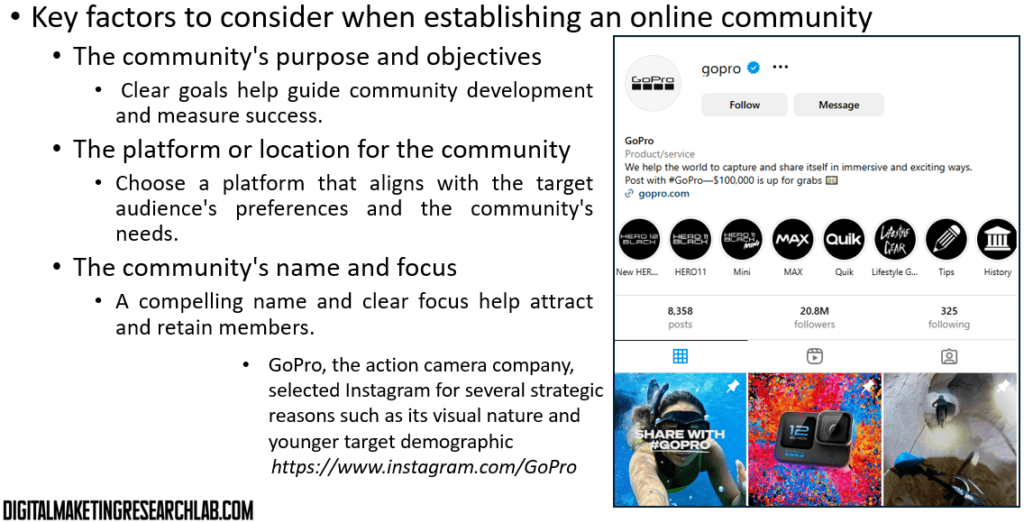
Speaking of members, who exactly are you trying to reach? And once you’ve got them, how will you keep them engaged? These are crucial questions to answer early on.
Content is king in any online community, so you’ll need a solid plan for creating and managing valuable, consistent content that encourages participation.
Lastly, don’t forget to scope out the competition. What other similar communities are out there? How can you make yours stand out?
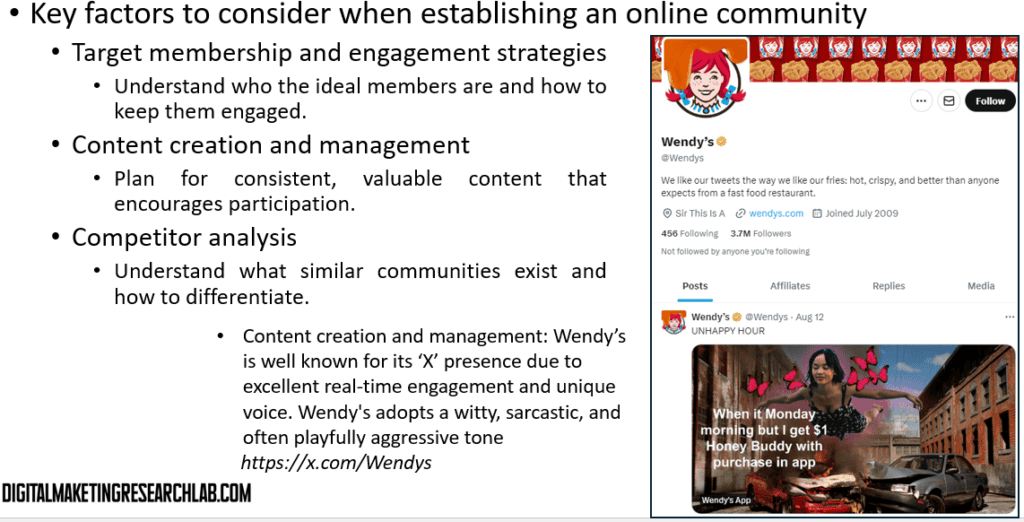
Now, managing an online community isn’t a walk in the park. It takes resources – people, time, tech, and yes, money. But if you do it right, it can be incredibly rewarding.
One of the keys to successful community management is really understanding your customers. You need to be constantly listening, gathering feedback, and staying on top of what your members are talking about.

Involving your community in product development can be a great way to boost engagement and loyalty. And when it comes time to launch new products, your community can be an invaluable platform for getting the word out and gathering immediate feedback.
Of course, it’s not all about talking – listening is just as important. Make sure you’re actively monitoring and responding to member comments and suggestions.
Keeping your community in the loop about relevant news and addressing any issues promptly is crucial. And don’t forget to keep an eye on how your brand is being discussed across the community, addressing both the good and the bad.
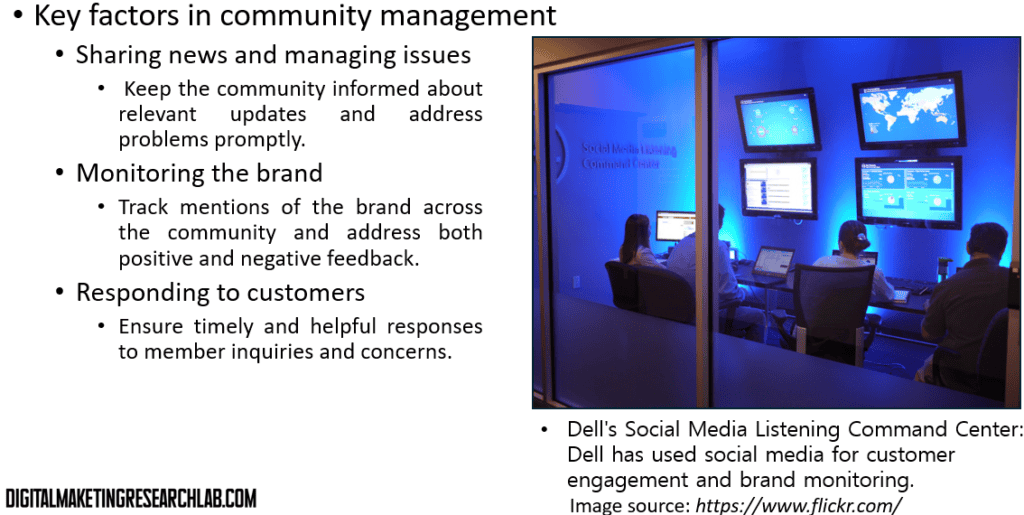
Now, to keep things running smoothly, you’ll need some ground rules. These might include guidelines for respectful communication, what kind of content is appropriate to post, and what’s absolutely off-limits. You’ll also want to think about how to handle intellectual property and protect people’s privacy. And of course, you’ll need to be clear about what happens if someone breaks the rules.
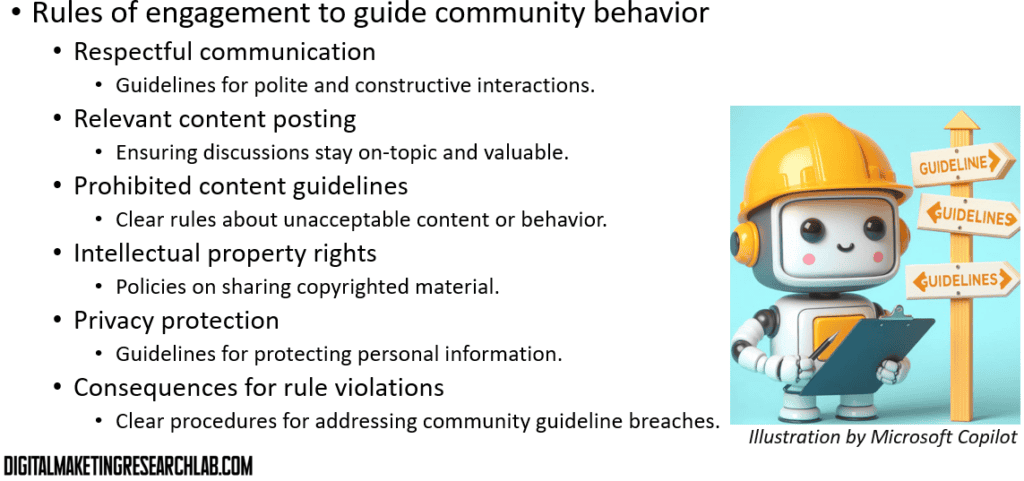
Responding to community feedback, both positive and negative, is crucial for maintaining a healthy community. Gregoire et al. (2015) identified several types of social media complaints, each requiring a specific response strategy:
1. Directness: Direct contact with the company, requiring quick and constructive responses.
2. Boasting: Sharing positive resolutions, which should be acknowledged and amplified.
3. Badmouthing: Spreading negative word-of-mouth, requiring proactive engagement and resolution.

4. Tattling: Complaining to third-party sites, necessitating broader reputation management.
5. Spite: Aggressive negative sharing after double service failure, demanding immediate and comprehensive response.
6. Feeding the vultures: Competitors amplifying mistakes, requiring strategic crisis management.
Each type of complaint requires a tailored approach to maintain a positive community atmosphere and protect the organization’s reputation. Effective complaint handling can turn detractors into advocates and strengthen the overall community.

Conclusion
Online communities are evolving towards more localized and interest-based groups, with the COVID-19 pandemic accelerating the formation of neighborhood-focused online groups. The success of these communities hinges on fostering a sense of belonging, shared traditions, and member responsibility. As technology advances, augmented and virtual reality may create more immersive community experiences, while ethical concerns could drive the development of more transparent platforms. The power of online communities lies in their ability to connect people across various boundaries, offering tools for education, support, and social change.

*Reference
Hanlon, A. (2021). Digital marketing: strategic planning & integration. Sage.